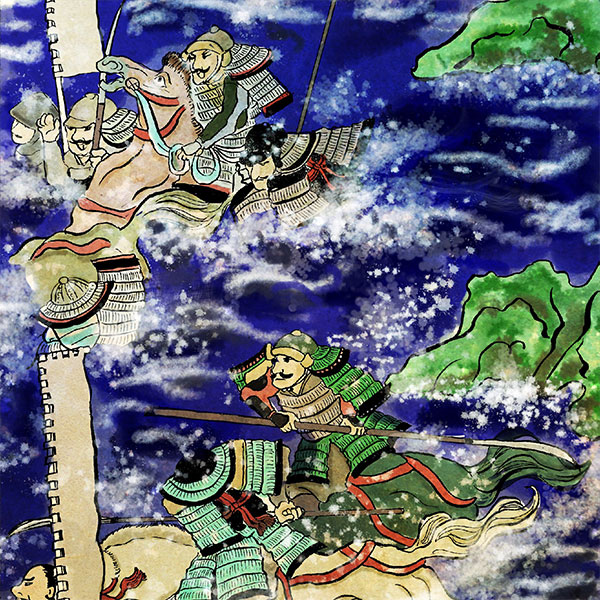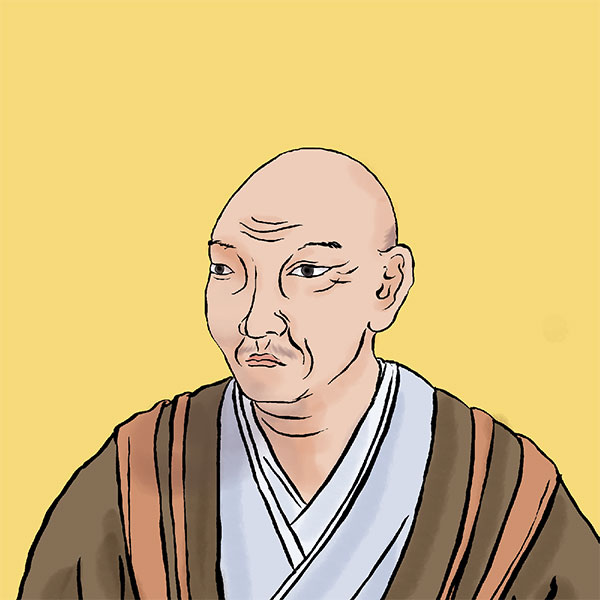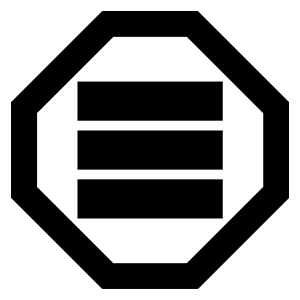- Usuki domainOne family continues to rule from the beginning of the feudal era.
- The Usuki Domain was a domain that existed in Usuki City, Oita Prefecture. It was ruled by the Inaba family from the time the domain was established until the Meiji Restoration. Let's unravel the history of the Usuki clan. Usuki Domain before the Edo period Before the Edo period, the land of Bungo, including the land of Usuki, was large.

Usuki CastleUsuki City, Oita Prefecture
- spring
- summer
- autumn
- winter
- TOP
- Kyushu
- Oita Prefecture
- Usuki Castle
| Other name | Nyujima Castle, Kyoki Castle, Kinki Castle, Turtle Castle |
|---|---|
| castle construction | 1562 |
| address | 91 Usuki, Usuki City, Oita Prefecture |
- Access to Usuki Castle
- About 9 minutes walk from JR "Usuki" station
HISTORYUsuki Castle, a castle that once floated on the sea
Usuki Castle is a sea castle built by Sorin Otomo on Nyujima Island in Usuki Bay, Usuki City, Oita Prefecture. When the castle was built, it was connected to land only at low tide, and at high tide the surrounding sea became a natural fortress. Currently, it is maintained as Usuki Park. Let's unravel the history of Usuki Castle.
- Castle built by Sorin Otomo
- Usuki Castle is a castle built by Otomo Sourin in the late 16th century on Nyujima, one of the Usuki Seven Islands floating in Usuki Bay. Although it has now been reclaimed and connected to land, at that time Nyujima was a small island floating in Usuki Bay, and was a natural fortress surrounded by the sea on the east, north, and south, with only the west side connected to land at low tide.
There is no exact record of when Otomo Sourin (Yoshishige), who built Usuki Castle, built this castle, but based on the letters written to the Society of Jesus by Gaspar Villera, a missionary who came to Japan to preach, It is generally believed that it was built in 1562. Around that time, Otomo Sorin was defeated in a battle with the Mori clan, and it is assumed that he moved from Otomokan in Oita Prefecture to Nyujima. It is said that by moving his headquarters to Usuki, Otomo Sorin may have wanted to create an economic city that would integrate the port and castle town of Usuki. The island's tidal flats were reclaimed and a castle town built. The castle was built with a triple tower and 31 towers. It is said that one of the most distinctive features was the two-story turret called Jubako Yagura. Otomo Sorin is also known as a Christian daimyo, and it is said that a place of worship was built within Usuki Castle, and a training ground for Christians was also built in the castle town.
In 1586, when the Battle of Nyujima Castle occurred due to the invasion of the Shimazu army, the Otomo army, which had barricaded itself in Usuki Castle, mobilized ``Franki cannons'' imported from the Netherlands and dispersed the Shimazu army. Although he fought bravely, the castle and the castle town sustained significant damage, and Otomo Sourin passed away the following year in 1587, heartbroken. Yoshimune Otomo, the eldest son of Sorin Otomo, became a vassal of the Toyotomi family, requested the aid of the Toyotomi army in the battle against the Shimazu clan, and helped Toyotomi Hideyoshi conquer Kyushu. Yoshimune Otomo had been baptized following his father Sorin Otomo, but since he became a vassal of the Toyotomi family, he apostatized in accordance with the edict of apostasy. Then, during the Bunroku Keicho era, he was accused of fleeing in front of the enemy and was chased out of the castle.
After that, Naotaka Fukuhara, Ishida Mitsunari's son-in-law, entered the castle and lived there for three years before handing it over to Kazuyoshi Ota in 1597. Kazuyoshi Ota renovated Usuki Castle into a modern castle, including adding the Sannomaru and relocating the Otemon Gate, bringing it almost to its current form. - Usuki Castle from the Edo period to the present
- In 1600, the Battle of Sekigahara occurred, and with the establishment of the Edo Shogunate, Sadamichi Inaba entered the castle from Gunjo Hachiman, Mino Province, with a fee of 50,000 koku. The area was ruled by the Inaba family until the Meiji period. This is a rare example in Japan where one family continued to rule one domain, with no transfers taking place from the time the domain was established until the Meiji period.
After the abolition of feudal domains and establishment of prefectures in the Meiji period, the buildings within the castle were demolished in 1873, leaving only a portion. Later, when the Seinan Rebellion broke out in 877, Yori Inaba, a retainer of the former Usuki domain, organized a Usuki troop to prepare for the invasion of the Satsuma military army commanded by Shinsuke Nomura. They barricaded themselves in the castle, but were defeated by an attack by the Kiheitai, and Usuki Castle was occupied. However, the Meiji government army sent reinforcements of four battalions and three warships, and Usuki Castle was recaptured, and the Kiheitai retreated to Kumada. After the Seinan Rebellion ended, the area around the castle was reclaimed in 1877, and it became connected to the castle by land.
In 1966, Usuki Castle was designated as a historic site by Oita Prefecture, and in 2001, the Daimon Yagura, which corresponds to the Ninomaru Otemon Gate, was restored with a wooden structure. Currently, the Honmaru and Ninomaru are designated as parkland, and in addition to the restored turret, part of the shoin garden and stone walls remain, making it a place of relaxation for citizens.
In 2017, it was designated as one of Japan's 100 famous castles. Although there are no castle towers left, the park has become a tourist attraction with its 1,000 cherry blossom trees in full bloom in the spring.
Read about incidents related to Usuki Castle
- Battle of MimikawaThe strongest Shimazu clan in Kyushu shows its true potential and defeats the Otomo clan
- During the Sengoku period, Kyushu was known as the ``Kyushu Sangokushi,'' a state in which three clans, the Otomo clan, the Shimazu clan, and the Ryuzoji clan, fought against each other. Meanwhile, in 1578, the Otomo clan and the Shimazu clan fought in Takagikawara, Hyuga Province (present-day Kijyo-cho, Miyazaki Prefecture), called the Battle of Mimikawa.

Read biographies related to Usuki Castle
- Otomo SourinThe most famous military commander of the Otomo clan
- During the Sengoku period, when battles for supremacy were waged across Japan, powerful warlords emerged and fought in the Kyushu region. Among them, the Otomo clan is one of the oldest samurai families along with the Shimazu clan. A talented vassal during the era of Otomo Yoshishige (referred to as Sorin in this article)

History of the Usuki clan, with Usuki Castle as its domain office
| Domain office | Usuki Castle |
|---|---|
| old area | Bungo country |
| stone height | 50,000 koku |
| Fudai/Tozama | Foreigner |
| main lord | Inaba family |
| Estimated population | 78,000 people (first year of the Meiji era) |











